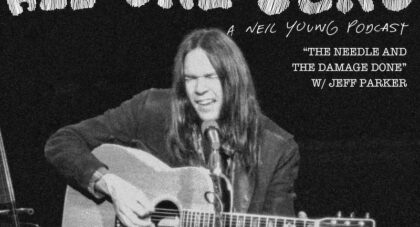On their new collaborative album, Daniel Lanois and electronic composer Aaron Funk, better known as Venetian Snares, make for an unexpected "Canadian team." As a producer and solo artist, Lanois's work is dedicated to open, moody space; Funk, on the other hand, populates his soundworlds with near constant twitching and aggressive motion. But Venetian Snares x Daniel Lanois makes sense of this contrast, blending Lanois' slow motion, gospel-informed pedal steel with Funk's dramatic breakcore.
Often, the record recalls the soundscapes of Lanois' work with Brian Eno on 1983's Apollo: Atmospheres and Soundtracks, if that record's spacey ambiance had been punctuated by violent bursts of noise and rhythm. Employing a Miles Davis cut-up style, manipulating "yards" of live recordings, Lanois edited the album together. It's a testament to his restless creative drive and a daring listen. We caught up with Lanois in LA to ask how the strange team-up came about.
Venetian Snares x Daniel Lanois by Venetian Snares x Daniel Lanois
Aquarium Drunkard: A few years ago, after recording an interview in your studio, you played us some of the music you were working with Venetian Snares on. I've been anxious to hear it since and it's turned out to be a wild record.
Daniel Lanois: Oh yeah, well we finally gave birth. [Laughs] It feels pretty good. I've been devoted to this for a while now, and I'll say to my friends, "By the time something comes out," by the time you get a release date from the label and all this, in a way, the creative peak has already happened. So I've actually moved on to some other work now, but hey, listen man, we're going on tour, Snares and I. I call [Aaron Funk] "Snares."
It's exciting. I feel like it's my first band. The shows feel like, "Whoa, things are so psychedelic." I'm pretty thrilled about it because we can really pull this thing off live. He's really a master. We make a pretty good Canadian team.
Only the good shit. Aquarium Drunkard is powered by its patrons. Keep the servers humming and help us continue doing it by pledging your support.
To continue reading, become a member or log in.


